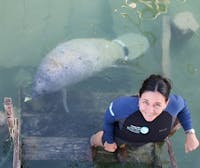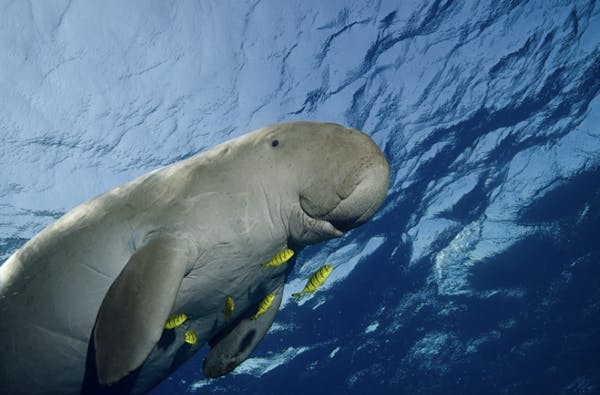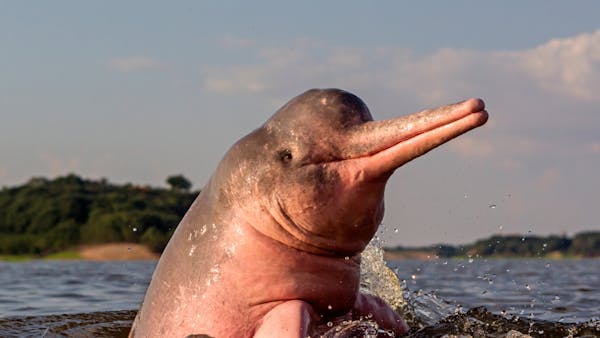The ecological significance of the Amazonian manatee
- Nature Conservation
- Ocean Conservation
- Iconic Species
- Wildlife
- Mammals
- Amazonia
- Southern America Realm
One Earth’s “Species of the Week” series highlights an iconic species that represents the unique biogeography of each of the 185 bioregions of the Earth.
The Amazonian manatee (Trichechus inunguis) is a unique Sirenian species. It is the only manatee inhabiting freshwater environments exclusively, specifically in the enormous Amazon basin of South America.

The Amazonian manatee (Trichechus inunguis) is the iconic species of the Southern Amazonian Forests bioregion (NT17), located in the Amazonia Subrealm in the Southern American Realm.
Size, color, and unique traits
It is also the smallest and darkest of the Sirenians. Adults can reach three meters (9.8 ft) in length and 450 kilograms (992 lb) in weight.
Amazonian manatees are dark gray, almost black, with a whitish or pinkish spot on the ventral area, which is distinctive for each individual. A particularity of the species is the absence of nails in the frontal flippers.
Feeding habits and ecological impact
In the Amazon, manatees are the only aquatic mammals exclusively herbivorous. Due to the exuberant richness of the basin, its diet is significantly diverse compared to other manatees.
Amazonian manatees consume more than twenty species of plants, including semiaquatic grasses, flowers, stems, fruits, seeds, and leaves of a wide variety of floating, shrubby and arboreal plants.
A manatee can consume a daily quantity of vegetation up to 10% of its body weight. Thus, a 300-kilogram (661 lb) manatee should eat 30 kilograms (66 lb) of macrophytes daily! That is a lot of food.
With this diet, manatees are believed to control the expansion of floating vegetation and return nutrients to the environment through feces and urine. Because the type of vegetation consumed is above the surface, it has been suggested that its jaw has a much lower degree of inclination than bottom-feeding manatees, such as Florida or the Great Caribbean manatee.
Although the role of manatees in the Amazonian ecosystem is still poorly understood, their presence indicates excellent habitat quality.
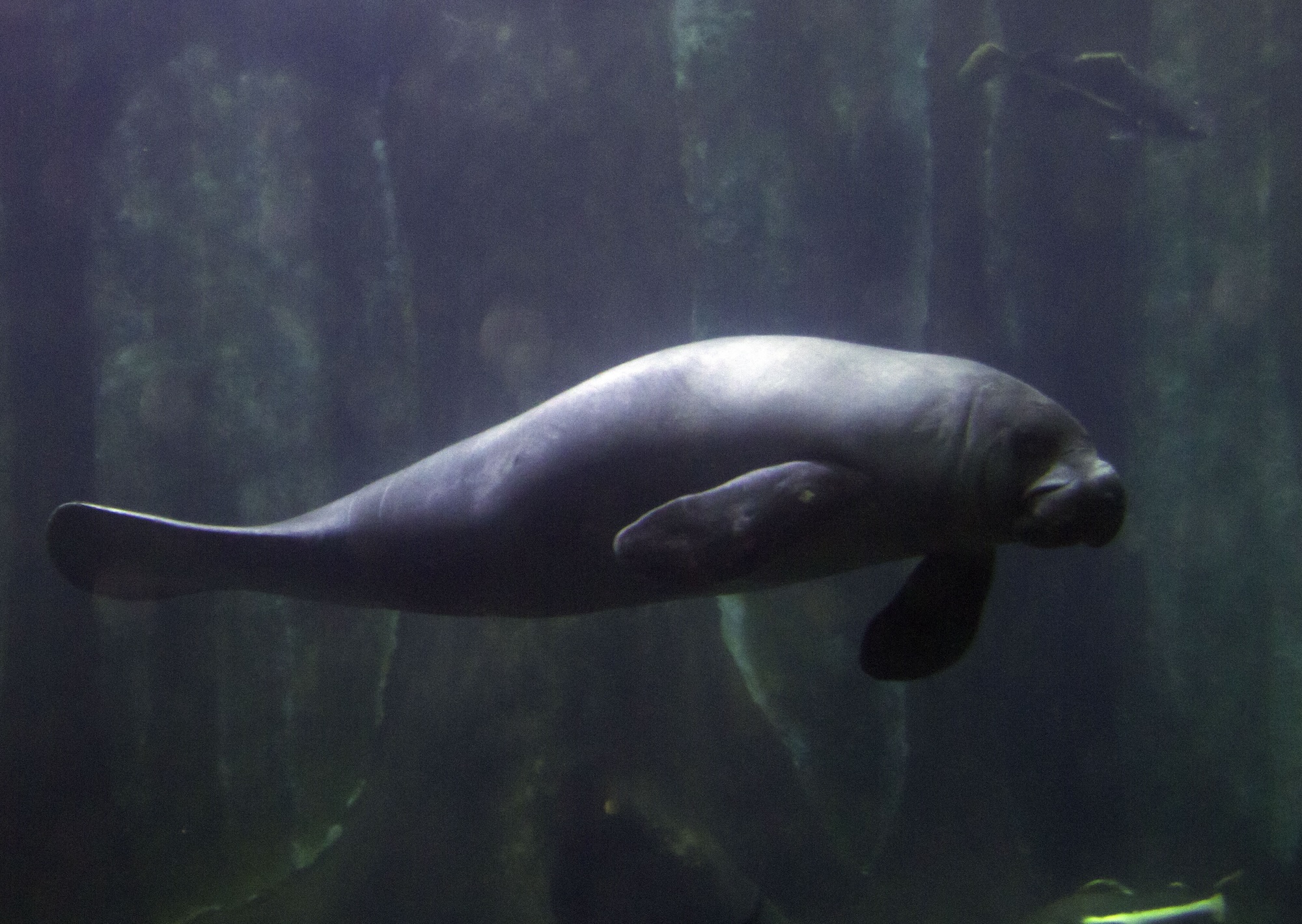
Amazonian manatees help balance aquatic vegetation, keeping the rivers and waterways of the Amazon healthy. Image Credit: Fábio Manfredini, Flickr.
Adaptive migration and survival strategies
Despite their slow motility, Amazonian manatees can migrate hundreds of kilometers per year as an adaptation to the hydroclimatic regime of the basin. Water depths in the Amazonian riverine system can fluctuate up to 10 meters (33 ft) from one season to another.
During periods of low water in lakes and rivers, manatees tend to stay in the deepest parts of the water bodies, where the availability of food is either scarce or completely absent. It is believed that they are able to survive during this time by fasting for several weeks.
When water levels rise, the famished manatees quickly migrate to areas where vegetation starts to appear. It is thought that males travel greater distances than females to guarantee genetic connectivity.
Challenges and innovations in research
It is almost impossible to spot an Amazonian manatee in the often murky waters of the Amazon and its tributaries. Due to their coloration, elusive and solitary behavior, and low population densities, encounters with these creatures in their natural environment are a privilege for few.
Researchers have adapted the traditional knowledge of manatee hunters to monitor Amazonian manatees in the wild. They silently wait in paddling canoes and spot the few clues of the manatee's presence as typical feeding grounds, floating feces, and even the shape of the waves.
In the last decade, the use of more sophisticated instruments, like sonar, has helped researchers detect manatees in the Amazon's dark and milky waters. But we still have a lot to understand.
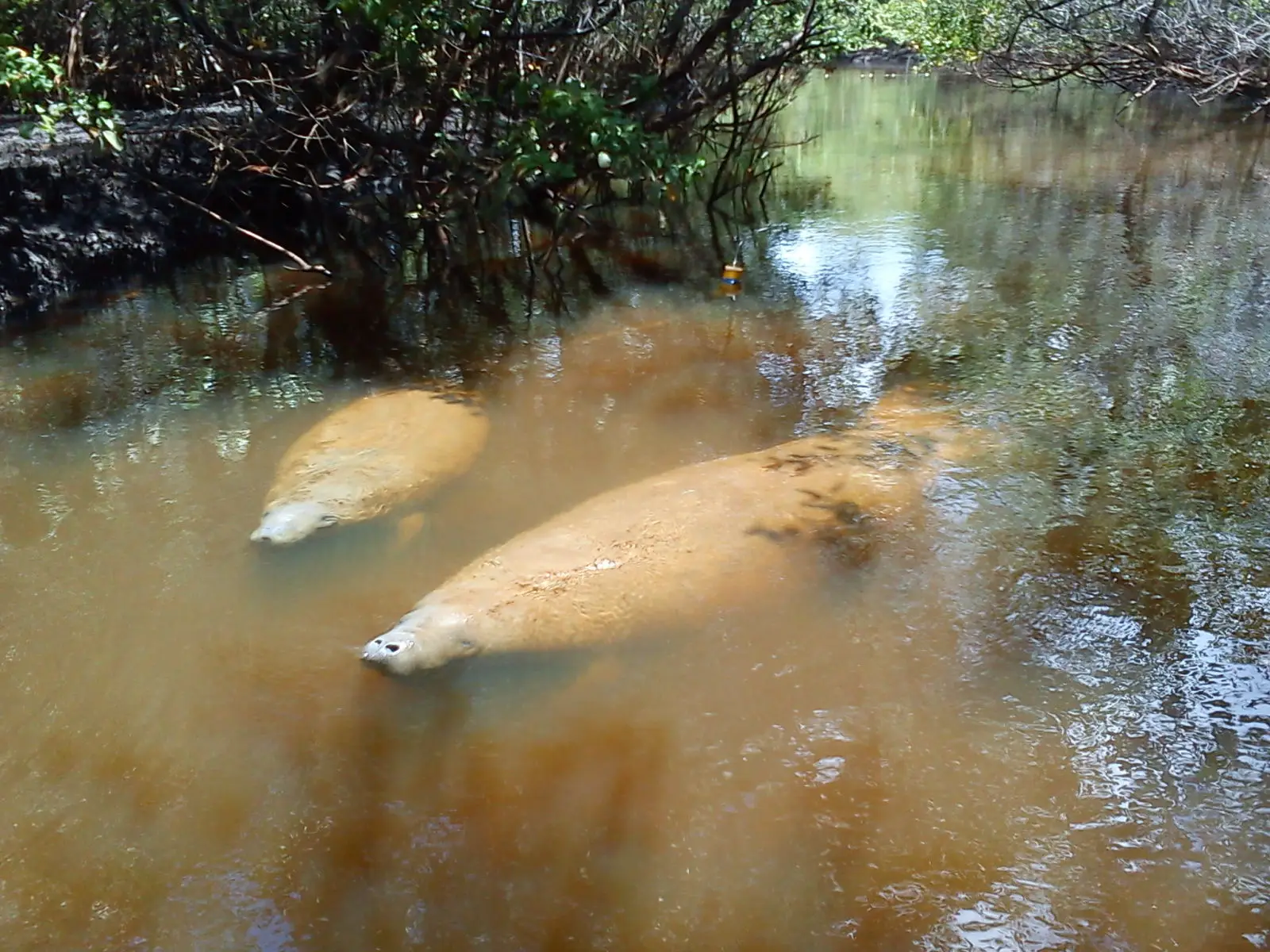
The seemingly lurking nature of the Amazonian manatee has inspired Indigenous folklore and legends. Image Credit: Monica Kaneko, Animalia.bio.
Amazonian manatees in folklore and local traditions.
The secretive behavior of Amazonian manatees has inspired many legends, and it is part of the Amazonian culture and beliefs. Amazonian fishermen say that even a small movement made by the paddle makes the manatees escape, and many of them have never seen a manatee alive (only in the cooking pot, as they often joke).
The manatee flesh and blubber are highly valued due to the flavor, which is described as a combination of pork, fish, and chicken.
Historical overhunting leading to population decline
The most intensive hunting and commercialization of Amazonian manatees occurred during the 18th century and continued until the mid-20th century. During the European colonization of South America, the Amazonian manatee was considered a large fish and was massively hunted and exported to Europe.
This uncontrolled activity caused such a decline in populations that it placed the species in a critical state of conservation.
Current threats and protection efforts
The Amazonian manatee is listed as Vulnerable (VU) on the IUCN red list and is a protected species in all the countries sharing the Amazon Basin: Brazil, Colombia, Peru, Ecuador, and Bolivia. However, poaching is still practiced.
Hunting is a traditional art that only some of the community's men know. In many communities, the expert manatee hunters are considered wise and respected elders. Manatees are traditionally hunted by harpooning, although some can be caught in fishing nets.
Usually, females with calves are an easy target for hunters, which also causes orphaned manatees as collateral damage. Due to the vastness of its areas of use, controlling hunting and the black market is challenging for environmental control agencies.
In addition to hunting, the species is also threatened by habitat alteration due to modern infrastructure, loss or degradation of floating or shore vegetation, pollution, and climate change.
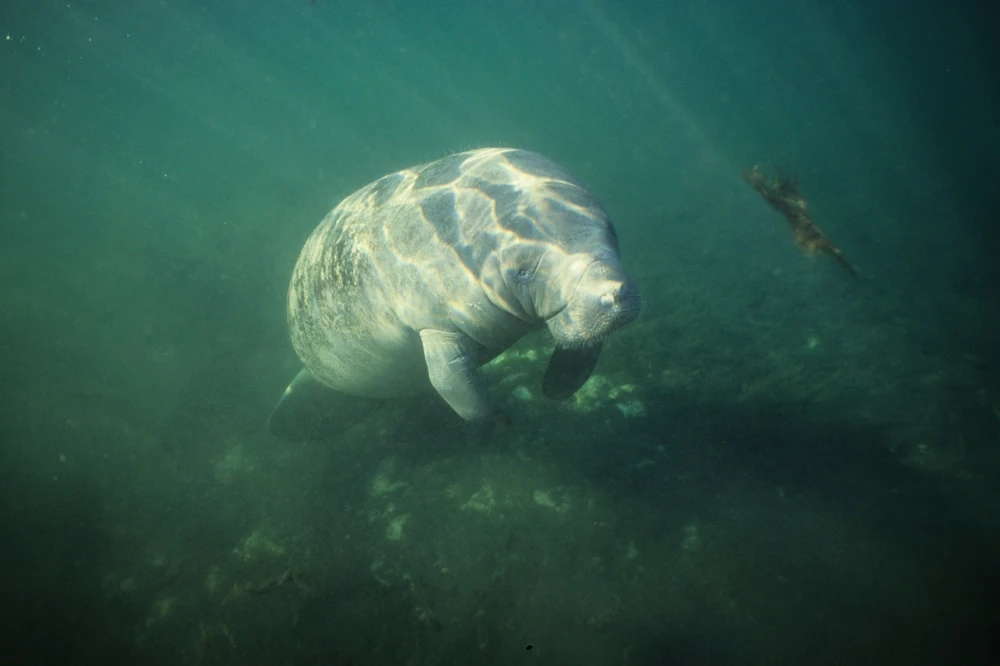
Protecting these gentle giants of the Amazon is not just about preserving a species but safeguarding an entire interconnected web of life. Image Credit: Coulanges, Animalia.bio.
Conservation, rehabilitation, and environmental awareness
Although it is difficult to monitor the precise status of wild Amazonian manatee populations, it is known that their population growth is slow, with long periods of gestation and parental care. Therefore, the numbers and mortality of orphans continue to concern manatee conservationists.
Brazil pioneered Amazonian manatee recovery, funding a rescue center in the 1970s. Sirenian specialists say more than 170 Amazonian manatees are currently under human care across nine rescue centers in Brazil and Peru.
Most of the individuals are undergoing a rehabilitation process for further release to the wild, and until now, almost 97 Amazonian manatees have returned to the wild. Despite these efforts, conservationists and researchers agree on the need for environmental awareness as an essential pillar in species conservation.
Colombia, Peru, and Brazil have developed outstanding long-term awareness campaigns to protect manatees and promote local communities' incorporation in Amazonian manatee recovery.
Safeguarding the gentle giants of the Amazon
The Amazonian manatee's struggle for survival is a poignant reminder of the delicate balance of life in the Amazon and the critical need for conservation efforts. Protecting these gentle giants is not just about preserving a species but safeguarding the interconnected web of life that defines this rich ecosystem.
Enhanced conservation efforts are vital to ensure that the Amazonian manatee continues to navigate the waters of its lush, biodiverse home.
Explore Earth's Bioregions.%20Image%20credit%20%C2%A9%C2%A0Diego%20Grandi%20_%20Dreamstime.jpg?auto=compress%2Cformat&w=1440)
